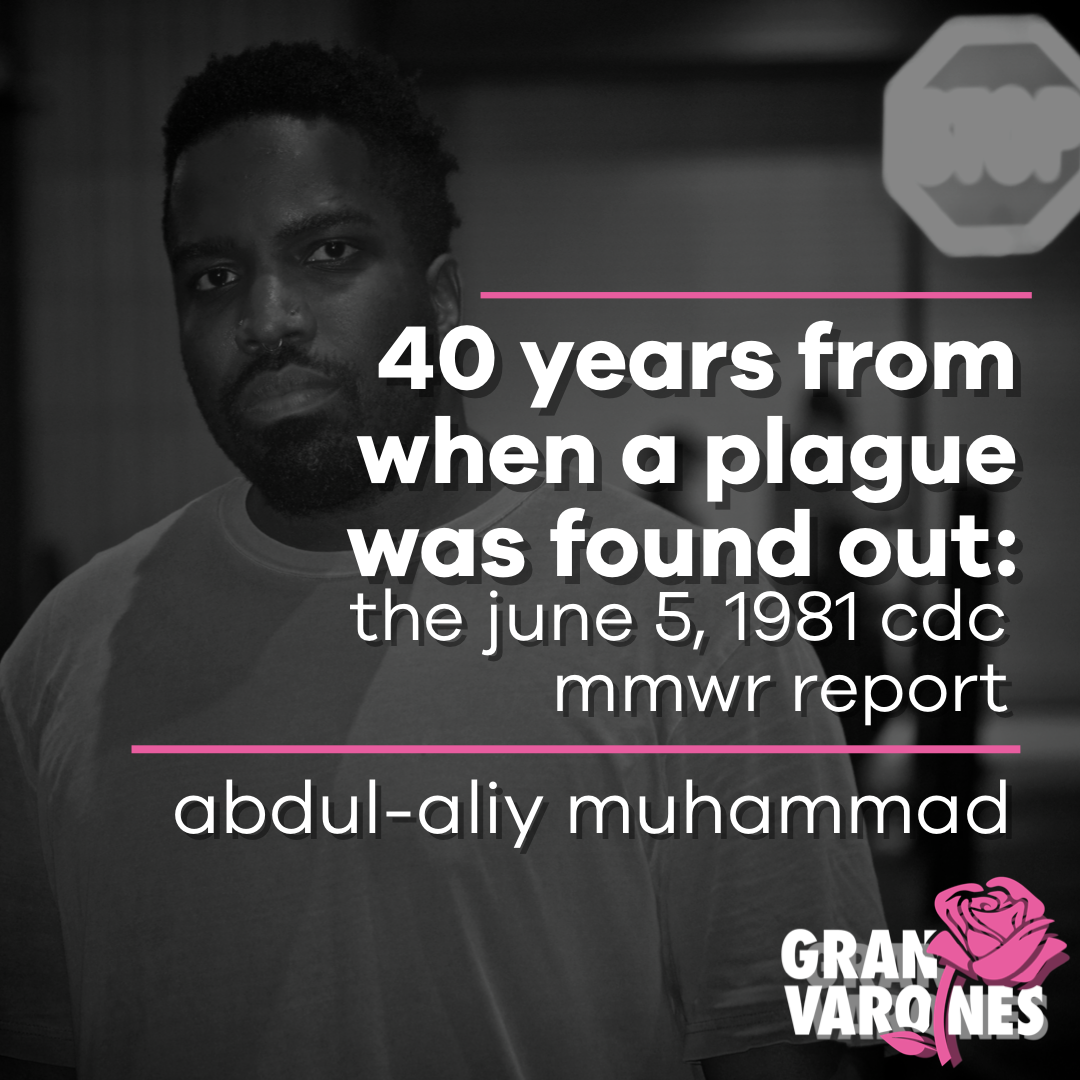40 years ago today, the Center for Disease Control’s MMWR released a report, stating that there were 5 cases reported of pneumocystis carinii pneumonia. That all the men were described as homosexual and that two of the men had already died. This is the first time we see documentation, in the US, if what would eventually be given the name AIDS. It’s important to remember that when these 5 men had a set of conditions that would mean an AIDS diagnosis, there weren’t any diagnostic tests for HIV in 1981.
When the New York Times writes about a rare cancer, Karposi’s Sarcoma, on July 3, 1981 – the headline reads “Rare cancer seen in 41 homosexuals” it brought an eerie foreboding.
We are about 40 years from when a plague was found out.
What we now know is that HIV was here for a long time prior to the emerging pandemic.

In early 1968 Robert Rayford, a Black 15-year-old, admitted himself to a hospital in St. Louis, Missouri. He told doctors he had been experiencing symptoms such as shortness of breath since 1966. Robert died on May 16, 1969, when he was 16 years old.
His blood and other specimens were held by doctors because they didn’t know what had killed him. Tested in the 1980s it was discovered that he had HIV.
We know that HIV has been in Kinshasa, Congo since the 1920s, again we know this by retroactively testing specimens and blood from patients there during this time. What’s clear is that AIDS, the condition, and HIV, the virus was made possible by colonization.
The stripping of resources from the continent created a situation where mission-driven healthcare was the only way for people to receive care.
The care was often inefficient and supplies, because of scarcity caused by racialized capitalism, created an environment where needles were used repeatedly on different patients, often not sanitized. These conditions made it possible for what most scientists identify as a species to jump from primates of simian immunodeficiency virus to humans.
This means that AIDS has always impacted Black people first and yet our collective AIDS histories are so white. As we consider the 40th Anniversary of HIV/AIDS and wax eloquently about our commitments to end an epidemic. I have a question:
What was it about anti-Blackness, that led to decades of non-attention to an unfolding crisis? And what is it about homophobia that seeded this idea of panic in 1981 and on?
Also, what might we have gained if Black people in the Congo and in St. Louis were treated like full humans and cared for in that vein?
May we have stopped the pandemic that emerged in the 1980s?
Written by: Abdul-Aliy Muhammad (They/Them). Abdul-Aliy is a Philadelphia-born writer, organizer, and co-founder of the Black and Brown Workers Co-op. In their work, they often trouble ideas of medical surveillance, bodily autonomy, and Blackness. Abdul-Aliy is also a Gran Varones Positive Digital Arts Fellowship Mentor.

Leave a Reply